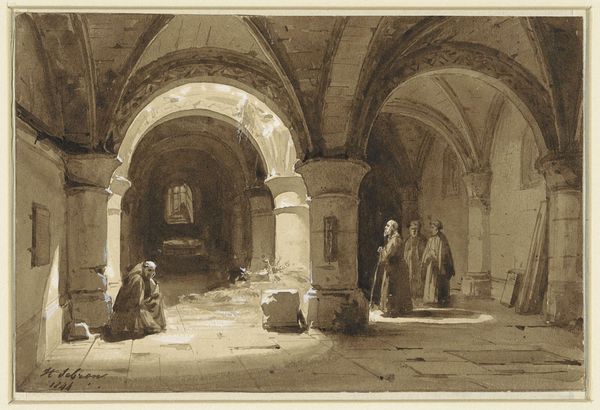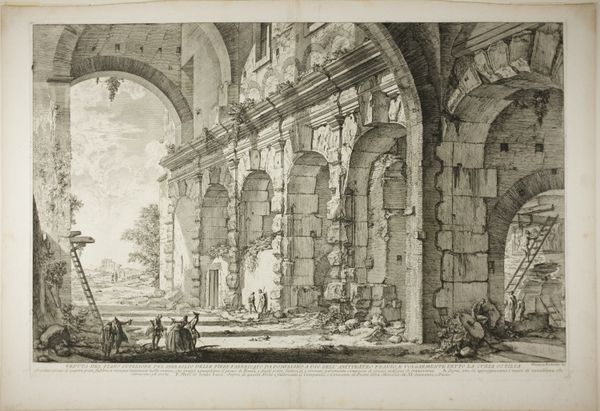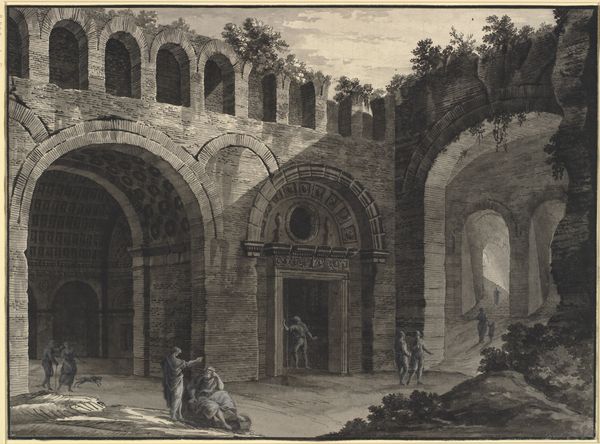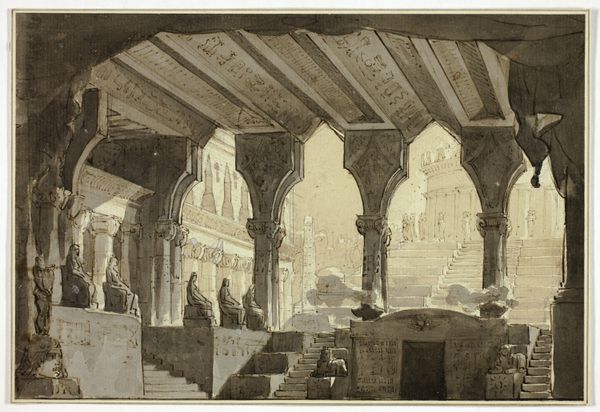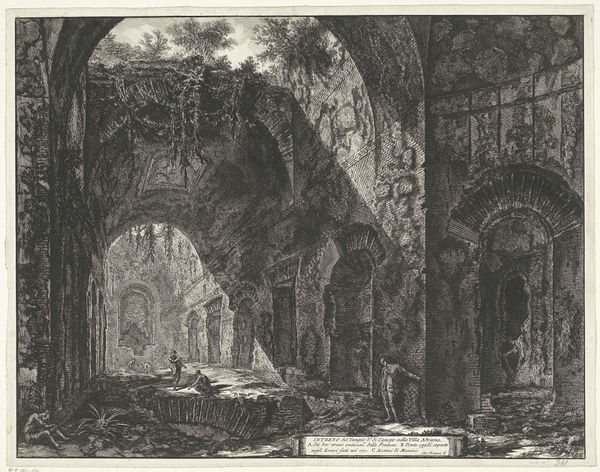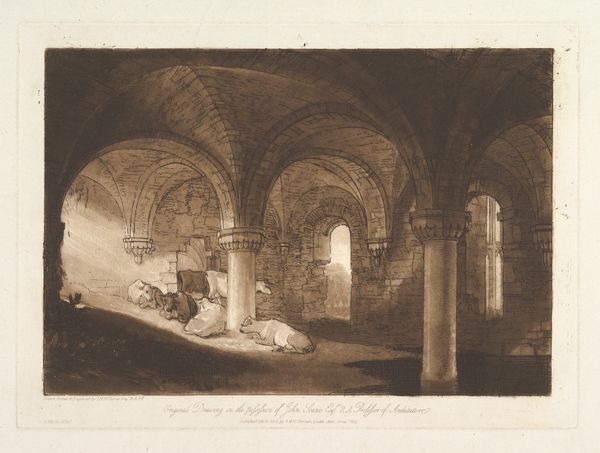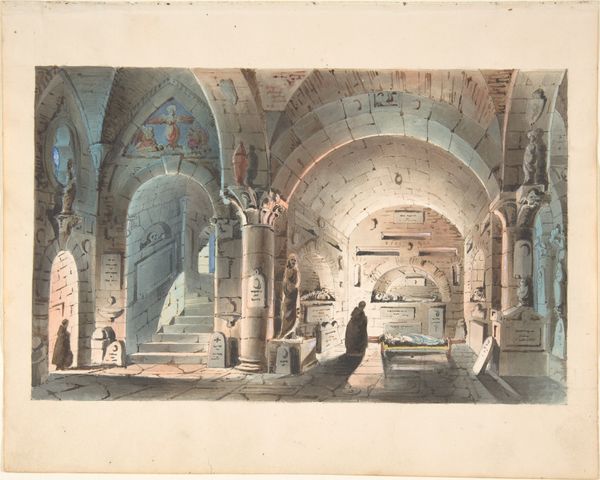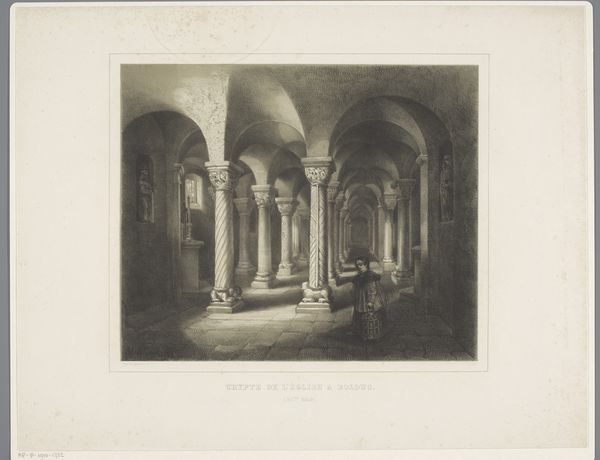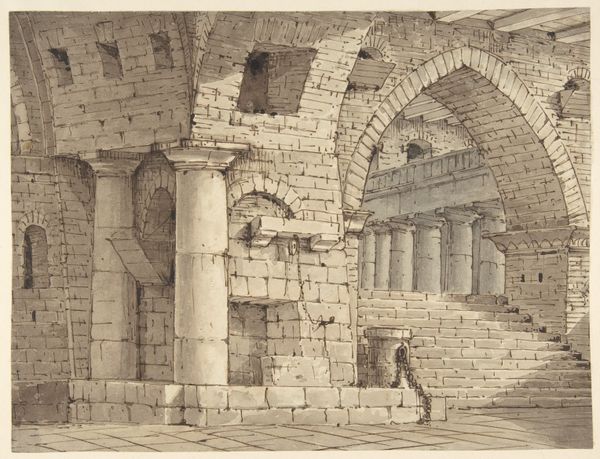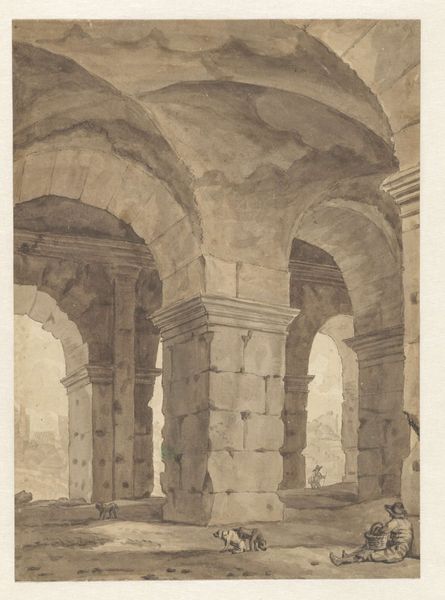
Visitors with Torches Inside a Circular Building 1764 - 1774
0:00
0:00
drawing, print, watercolor, ink, architecture
#
portrait
#
drawing
# print
#
landscape
#
classical-realism
#
charcoal drawing
#
romanesque
#
watercolor
#
ink
#
column
#
arch
#
cityscape
#
history-painting
#
charcoal
#
watercolor
#
architecture
#
building
Dimensions: 10 9/16 x 15 1/2 in. (26.8 x 39.3 cm.)
Copyright: Public Domain
Editor: Here we have Jean Pierre Louis Laurent Hoüel's "Visitors with Torches Inside a Circular Building," created sometime between 1764 and 1774. It's a drawing made with ink, watercolor, and charcoal, giving it this incredibly evocative, almost dreamlike quality. What strikes me most is the contrast between the grandeur of the architecture and the seemingly mundane activity of the torch-bearing visitors. How do you read this piece? Curator: The act of *making* becomes quite central here. Notice the very visible, almost rudimentary, strokes of ink and charcoal, which lay bare the artistic process itself. We can think about the economics of artistic production at the time. Was Hoüel responding to a demand for depictions of classical ruins, almost as a form of early tourism? Was this architecture readily available? Editor: That's interesting. So, you’re focusing on the physical creation and how it connects to the world outside the art itself. Curator: Precisely. Consider the raw materials - ink, watercolor, charcoal. These were commodities; their acquisition reflects material realities. The columns suggest power, but this power stems from the materials: where they were sourced, who labored to extract and shape them, how Hoüel himself had access to them, and whose resources granted him freedom to produce work like this. What impact has it, then? How does labor and economy make a dialogue with art and society here? Editor: So it is also questioning what is visible *outside* the depicted scene, so to speak? Curator: Indeed. Who would this image be circulated amongst? And what sort of economic capital did *this* scene depict? How does this scene reify class hierarchies of its day? By posing these questions, the art moves beyond a simple picturesque view. Editor: That makes me think about how our access to art is itself dependent on materials and systems of value, just like back then! Thanks; that perspective really changed how I see this. Curator: It's a two-way street. Examining the production of art gives insight to the times but vice versa!
Comments
No comments
Be the first to comment and join the conversation on the ultimate creative platform.

